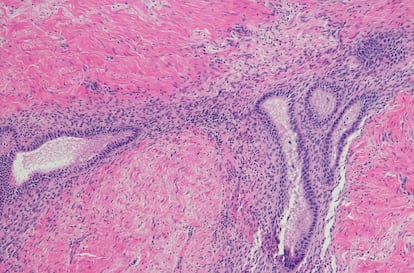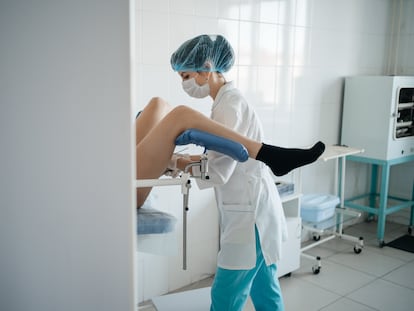Why is penetration painful?
The two most common causes are endometriosis, which affects one in 10 women, and reduced lubrication due to menopause

There are two different types of pain from penetration, one that occurs at the entrance of the vagina and one that affects the back of the vagina. The first tends to be related to lubrication, while the second usually has to do with a disease called endometriosis.
For an older woman, the problem is most likely dyspareunia at the entrance of the vagina. That is the medical term for pain during intercourse, due to less lubrication and post-menopause atrophy of the tissues. Just as skin dries out and wrinkles — i.e., it atrophies — with age, the same thing happens to vaginal skin: it becomes more fragile. Sometimes, this causes spotting in some women after intercourse. It is as if you were constantly subjecting the skin on your hand to friction: in the end, it gets red, irritated, bothersome. Well, this is similar, and it has to do with tissue atrophy and vaginal dryness.
If this happens regularly to a young woman, the reason may be that she is not lubricating properly or that she has not had enough foreplay to sufficiently lubricate; if it’s a new onset of pain, the most frequent cause is a yeast infection. But in an older woman, lubrication is usually reduced because she lacks hormones following menopause, in addition to age-related genital atrophy, so the vaginal entrance orifice is narrower, and the skin is weaker. All of this hurts and makes penetration difficult.
The solution is to use gels or moisturizing creams for the vagina. When the atrophy is very marked, the woman may need hormones, if only to apply locally for a while. The usual lubricants that many people use do not solve the problem because, if the atrophy is very marked, they do not fix it. That is why gels are used with hormones and, perhaps, a lubricant during intercourse as well.
When there is deep dyspareunia — pain at the back of the vagina — the first thing to rule out is endometriosis. Pain may also be due to other diseases. For example, you may have a myoma in the uterus and the myoma is hit on penetration, or you may have another type of ovarian cyst, or inflammation in the Fallopian tubes. But it is most commonly due to endometriosis.
This disease occurs when the mucus membrane of the uterus, the endometrium, is placed in areas where it shouldn’t be; most often, that’s the ovaries. Then, when a woman has her period, the period occurs normally, but as the endometrium is placed in the ovaries, blood also accumulates there. And this forms ovarian cysts, which we call chocolate cysts because they are brown from old (oxidized) blood. Consequently, each time the woman has her period she feels pain in her pelvis and, when penetration occurs, the penis collides with these cysts and causes a great deal of pain. Typically, women who have endometriosis present with pain: pain with their period, pain with penetration and sometimes daily pain. Endometriosis is a very common disease; it is estimated that about 10% of women of childbearing age have it. But in this situation, there’s a solution to pain during penetration: it is necessary to go to the root and treat the pathology that is causing the pain.
In any case, the general recommendation is that any woman who feels pain during penetration should see her medical professional for an examination to find the cause in order to treat it.
Sign up for our weekly newsletter to get more English-language news coverage from EL PAÍS USA Edition
Tu suscripción se está usando en otro dispositivo
¿Quieres añadir otro usuario a tu suscripción?
Si continúas leyendo en este dispositivo, no se podrá leer en el otro.
FlechaTu suscripción se está usando en otro dispositivo y solo puedes acceder a EL PAÍS desde un dispositivo a la vez.
Si quieres compartir tu cuenta, cambia tu suscripción a la modalidad Premium, así podrás añadir otro usuario. Cada uno accederá con su propia cuenta de email, lo que os permitirá personalizar vuestra experiencia en EL PAÍS.
¿Tienes una suscripción de empresa? Accede aquí para contratar más cuentas.
En el caso de no saber quién está usando tu cuenta, te recomendamos cambiar tu contraseña aquí.
Si decides continuar compartiendo tu cuenta, este mensaje se mostrará en tu dispositivo y en el de la otra persona que está usando tu cuenta de forma indefinida, afectando a tu experiencia de lectura. Puedes consultar aquí los términos y condiciones de la suscripción digital.










































